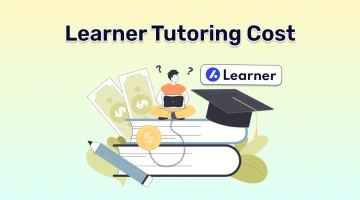Multiplication Facts Practice
Updated on January 23, 2025
Parents and tutors often see solving multiplication facts as a warm-up exercise before the learning process begins. But without adequate information, they skip essential steps in the multiplication learning journey. So, this article outlines the appropriate way to set up and oversee multiplication facts practice.
What Are Multiplication Facts?
In mathematics, multiplication facts refer to the solutions to a multiplication problem. For instance, the multiplication fact of 2 x 6 is 12; any other result is wrong. Alternatively, you could try repeated addition to get a multiplication fact. For instance, 2 x 6 equals the result of counting two six times. In this example, the sum of 2 + 2 + 2 + 2 + 2 + 2 = 12.
Kids need to master multiplication facts to understand division, fractions, and other concepts involving multi-digit numbers. Without proper guidance, kids may find it difficult to comprehend new ideas as calculation will take time. Now that you understand the concept, keep reading to see how to teach multiplication facts quickly and effectively.
Check out the Printable Multiplication Worksheets for Your Kids!
1:1 Math Lessons
Want to raise a genius? Start
learning Math with Brighterly
 Let's start learning Math!
Let's start learning Math!
How to Teach a Child Multiplication Facts
At this point, you may wonder how to teach your child multiplication facts. The following approaches will show you how to teach multiplication facts to kids in the most efficient way.
Teach kids one multiplication table at a time
To effectively teach multiplication facts, you need to offer multiplication tables to kids one at a time so that learning multiplication facts can be easy. Break multiplication facts into chunks and have a child start from the basics like 2, 3, and 5 times table before slowly progressing to more complicated ones like 6, 7, 8, etc.
Rehash existing ideas
Before moving to another multiplication facts practice, encourage kids to spend as much time as they need on mastering the previous one. To make children fluent in multiplication, set aside 15 to 20 minutes each day to carry out drills for perfecting multiplication facts practice.
Engage family members in the process
Not everyone knows how to teach multiplication facts to struggling students. However, family members can be helpful as they understand the child and don’t make them feel threatened. So, as a teacher, prepare notes for kids to study with help from family members when they are home.
Use manipulatives and teaching aids
Printed multiplication tables and flashcards are among the best bets to help kids understand multiplication. This way, you can test kids’ knowledge, reinforce already-learned concepts, and replicate the tables they’ve learned in school. This method can help kids retain the information longer.
Acquaint the child with some multiplication tricks
Help the child understand that some results are constant in multiplication math facts. For instance, any number multiplied by 0 equals 0 (4 x 0 = 0, 1000 x 0 = 0, etc.) Also, any number except zero multiplied by 1 equals that same number (2 x 1 = 2, 50 x 1 = 50, etc.) Explain to the child that you can also use additions to get multiplications. For instance, 3 x 3 = 3 + 3 + 3 = 9.
Use multiplication flashcards
You can test a child’s recognition of the timetable with flashcards. Multiplication flashcards may sound like a lot of work, but they are adequate for practicing multiplication facts. Encourage kids to spend time studying until they have memorized all the flashcards.
Use multiplication worksheets
Worksheets can help test your student’s understanding of multiplication facts. Start with one number set at a time and have the student work their way up. Mix up number sets and see how well kids perform on the worksheets after learning the timetable. Move on to using worksheets after the kids must have mastered the flashcards.
1:1 Math Lessons
Want to raise a genius? Start
learning Math with Brighterly
 Let's start learning Math!
Let's start learning Math!
Get a timer or stopwatch
Practice multiplication facts using a timer after kids learn flashcards and work with the multiplication worksheet. When introducing a timer, remind the kids to pretend they have an exam. It will ensure that children do not spend all their time working on one math problem.
Songs and singalongs
Most kids can learn the timetables better when listening to music rather than by usual memorization. You can get CDs with timetables songs from your local kid’s shop or even get one online. The best thing is to try a few and see which one works best for your struggling students. Remember that not every kid learns the same way, so always fetch out new methods to introduce multiplication facts to kids.
Use math games
Math games are fun and speed up your student’s arithmetic skills. You can get online games that may help the kid learn and memorize a multiplication fact. Alternatively, you could play number games and riddles where you ask a math question phrased in a story form. The kids will answer. Multiplication facts games are enjoyable while also assisting children in making connections between the numbers.
Use math times tables
When teaching multiplication facts, encourage kids to make connections between the numbers and the tables of multiplication they learn in school. Children should make an effort to use the math tables regularly. As a result, they will have a deeper understanding of the numbers rather than merely remembering them.
Practice skip counting
You can take kids through skip counting exercises since they fall within serial additions that equal multiplication. Skip counting by 10 is the same as the ten times table, which is 10, 20, 30, 40, etc. It will familiarize children with some multiplication facts practices.
Struggling with Multiplication? Book 1:1 Lesson with Perfect Tutor For Your Kid!
Conclusion
It could be challenging to introduce multiplication facts to children if you are a teacher or parent. Sometimes, you present too many concepts at once; other times, you may not know the learning method that works best for your child. Using the tips and tricks in this article, you can help your youngster master multiplication facts quickly and effectively.












